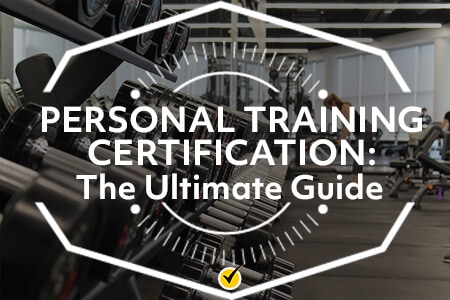– Personal trainers can focus on a specific area or choose to have a broader approach that uses all areas and elements of being fit.
A personal trainer helps their clients reach their personal fitness and health goals. Not only does a personal trainer help with fitness and health goals, but they also teach their clients how to live a healthy lifestyle and a good attitude to go along with it.
Many personal trainers work in fitness centers while others may work in hospitals or for educational services. Some of their typical daily duties include monitoring their client’s progress, demonstrating exercises and routines, and providing information on general fitness and health issues.
Becoming a personal trainer can be rewarding. However, there are several options when it comes to becoming a certified personal trainer.
NASM – National Academy of Sports Medicine
– NASM personal trainers can train anyone from 9 to 99 years of age.
– The passing rate for the NASM exam is 66% as of August 2018.
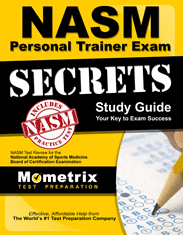
The National Academy of Sports Medicine offers the Certified Personal Trainer certification. The NASM Personal Training Certification exam is a great option for those who have a formal education in a related field such as athletic coaching or training and has experience with exercise and fitness science. The CPT designation shows that you have demonstrated that you have the knowledge, skills, and abilities in the discipline of health, fitness, and nutrition.
The NASM exam consists of 120 questions that are to be completed within two hours. Out of those 120 questions, 100 are scored and go towards your final score while the remaining 20 are unscored pretest questions. There are 6 major domains on the NASM exam:
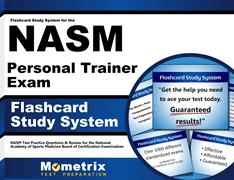
• Basic and Applied Sciences and Nutritional Concepts
• Assessment
• Program Design
• Exercise Technique and Training Instruction
• Client Relations and Behavioral Coaching
• Professional Development and Responsibility
To be eligible to take the NASM-CPT exam, you must meet these requirements:
• Be 18 years or older
• Have a high school diploma or equivalent
• A current CPR and AED certification prior to sitting for the exam
• A passion for health and fitness
ACE – The American Council on Exercise
– The ACE exam is a competency-based exam, meaning that you will be tested over the knowledge that you currently have when it comes to exercise and health.
– As of 2017, the pass rate for the ACE exam was 65%.
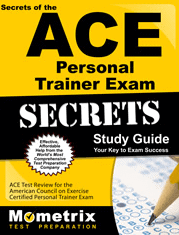
The American Council on Exercise certification focuses on educating clients about weight loss, preventative care, strength and fitness training, and setting health goals. The ACE certification also includes a highly applied system of cardiorespiratory training with movement and resistance training while integrating stability, mobility and movement training. You’re not required to have a degree to be eligible to take the ACE Personal Training Certification, but having a degree in exercise science or kinesiology can help you prepare for the exam.
Passing the ACE exam shows that you have the skills and knowledge that is necessary and critical to be a safe and competent personal trainer.
The ACE exam consists of 150 multiple-choice questions that include 25 experimental questions that do not count towards your final score. There are 4 domains included on the ACE exam:
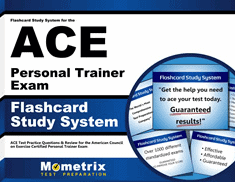
• Interviews and Assessments
• Program Design and Implementation
• Program Modification and Progression
• Professional Conduct, Safety, and Risk Management
To be eligible to take the ACE exam, you must meet these requirements:
• Be at least 18 years old
• Have a high school diploma or equivalent
• A current CPR and AED certification prior to sitting for the exam
NSCA – National Strength and Conditioning Association
– As of 2017, the passing rate for the NSCA CPT exam was 76%.
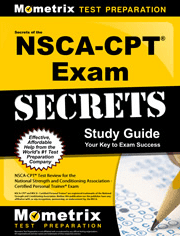
Those who hold a certification from the National Strength and Conditioning Association prove that they are health and fitness professionals, who use an individualized approach to assess, motivate, educate, and train their clients based on their health and fitness needs.
The NSCA exam contains 140 scored multiple-choice questions and 15 non-scored questions that must be completed within 3 hours. There are 4 domains on the NSCA exam:
• Client Consultation/Fitness Assessment
• Program Planning
• Exercise Technique
• Safety/Emergency Issues
There are also 25 to 35 videos and/or image items that assess competencies across multiple domains.
To become NSCA certified, you must meet these requirements:
• Be at least 18 years old
• Have a high school diploma or equivalent
• A current CPR and AED certification prior to sitting for the exam
ACSM– American College of Sports Medicine
– ACSM personal trainers use research-based techniques to help their clients reach their personal fitness goals.
– The pass rate for the ACSM exam was 55% as of 2017.
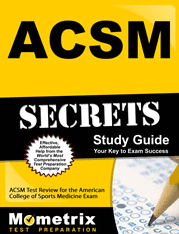
Those who are personal trainers through the American College of Sports Medicine are professionals who develop personalized exercise programs and implement those programs for their clients. Having an ACSM Certification also means that you have practical and scientific knowledge that allows you to work in a variety of facilities such as health clubs, universities, gyms, and community or public fitness centers.
The ACSM exam consists of 150 questions, 120 of which are scored and 30 are non-scored. You have 165 minutes to answer every question. There are 4 domains included on the ACSM exam:
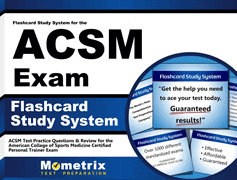
• Initial Client Consultation and Assessment
• Exercise Programming and Implementation
• Exercise Leadership and Client Education
• Legal and Professional Responsibilities
To become ACSM certified, you must meet these requirements:
• Be at least 18 years old
• Have a high school diploma or equivalent
• A current CPR and AED certification with hands-on skills component
NESTA – National Exercise & Sports Trainers Association
– The NESTA certification is for those who are just beginning in the fitness industry and who want to work in a health club environment.
– The pass rate for the NESTA certification is 71.1%.
The National Exercise and Sports Trainers Association certification is geared towards those who want to become a personal trainer and are in the beginning steps of being just that. Being NESTA personal trainer certified shows that you have the expertise and skills to train a variety of individuals to help them achieve their fitness goals.
The NESTA exam consists of 125 questions to be answered within 2 hours. There are 7 domains included on the NESTA exam:
• Exercise Application and Instruction
• Program Design
• Business Application
• Assessments, Injury Prevention and Emergency Care
• Exercise Science
• Exercise Psychology
• Nutritional Science
To become NESTA certified, you must meet these requirements:
• Be at least 18 years old
• Have a valid drivers license
• Have a high school diploma or equivalent
• A current CPR certification or BLS certification in place of CPR card
NCCPT- National Council for Certified Personal Trainers
– The pass rate for the NCCPT exam was 65% as of 2017.
The National Council for Certified Personal Trainers certification is for those who want to become an entry-level personal trainer. The NCCPT certification shows that you are competent to provide safe personal training to clients. The certification also shows that you understand the “art” of personal training.
The NCCPT certification exam consists of 140 multiple-choice questions. Of those 140 questions, 125 are scored and 15 are not scored. You will have two hours to complete the exam. There are 7 domains on the NCCPT exam:
• Health Assessment
• Kinesiology
• Exercise Physiology
• Nutrition
• Exercise Application
• Business Training
• Emergency Procedures
To become NCCPT certified, you must meet these requirements:
• Be at least 18 years old
• Have a valid government issued photo ID
• Have a valid CPR card
NCSF– National Council on Strength & Fitness
– The pass rate for the NCSF exam was 29.15% as of 2016.
The National Council on Strength and Fitness certification exam is for those who want to become a personal trainer or an exercise science professional.
The NCSF certification exam consists of 150 multiple-choice questions that are to be completed within 3 hours. There are 9 sections on the exam:
• Functional Anatomy
• Exercise Physiology
• Physical Activity and Health Promotion
• Screening, Evaluation and Professional Practice
• Nutrition
• Weight Management
• Exercise Prescription and Programming Considerations
• Training Instruction
• Considerations for Special Populations
To become NCSF certified, you must meet these requirements:
• Be at least 18 years old
• Have a high school diploma or equivalent
• Not required, but recommended to have a minimal level of practice working experience

